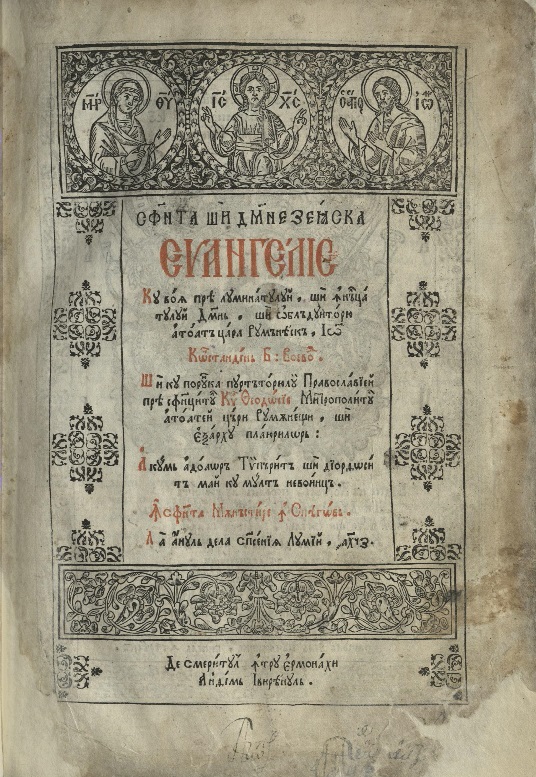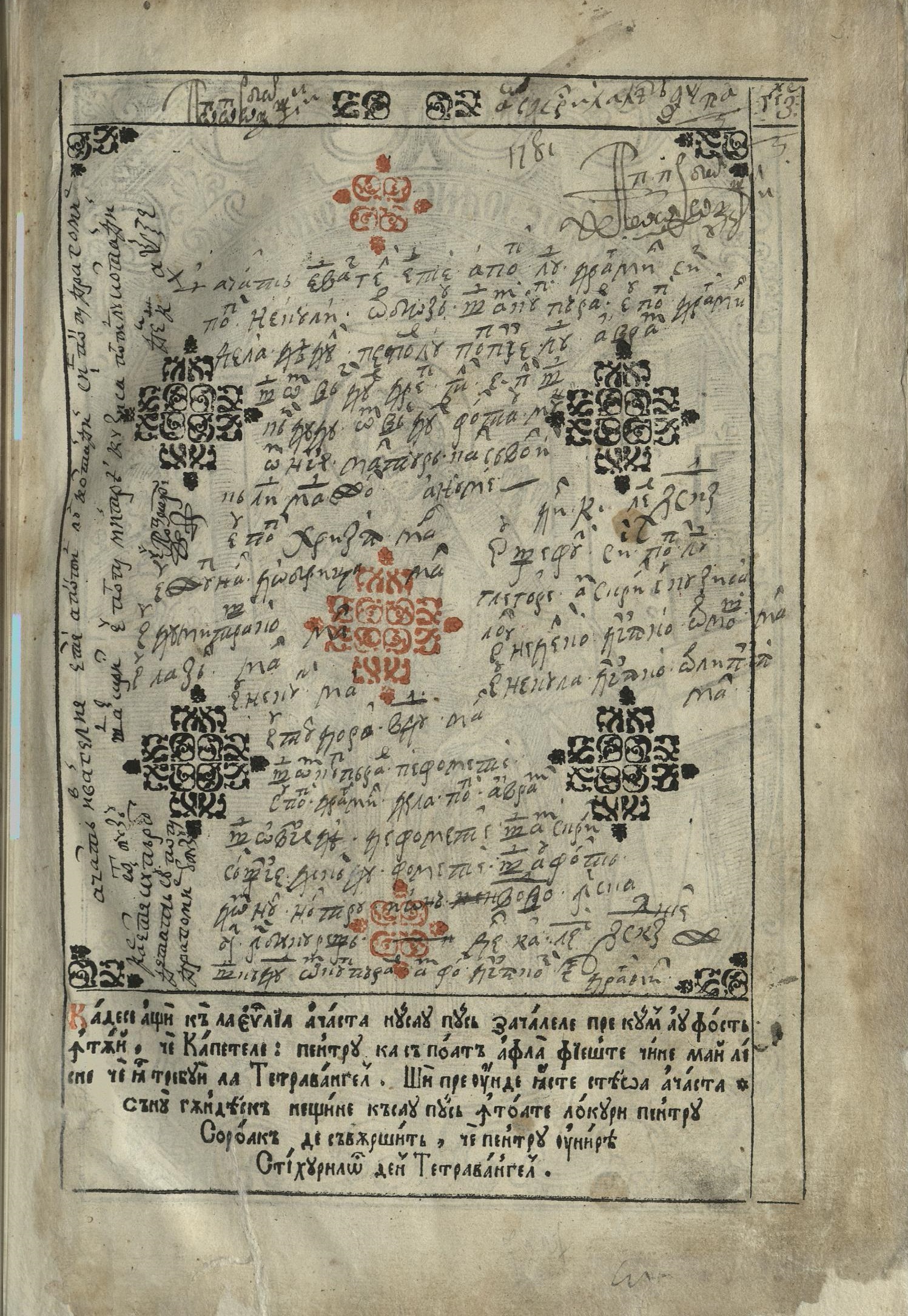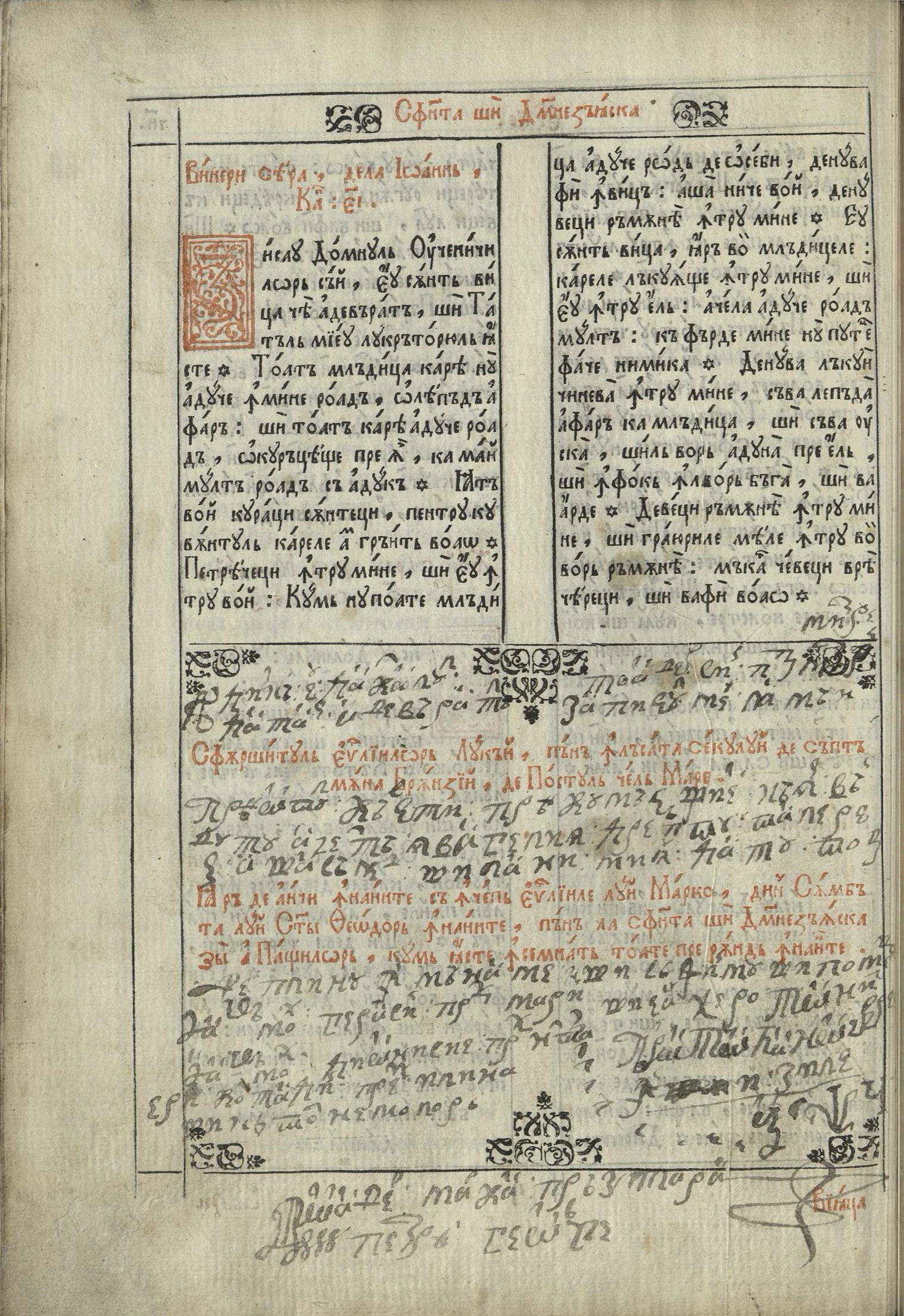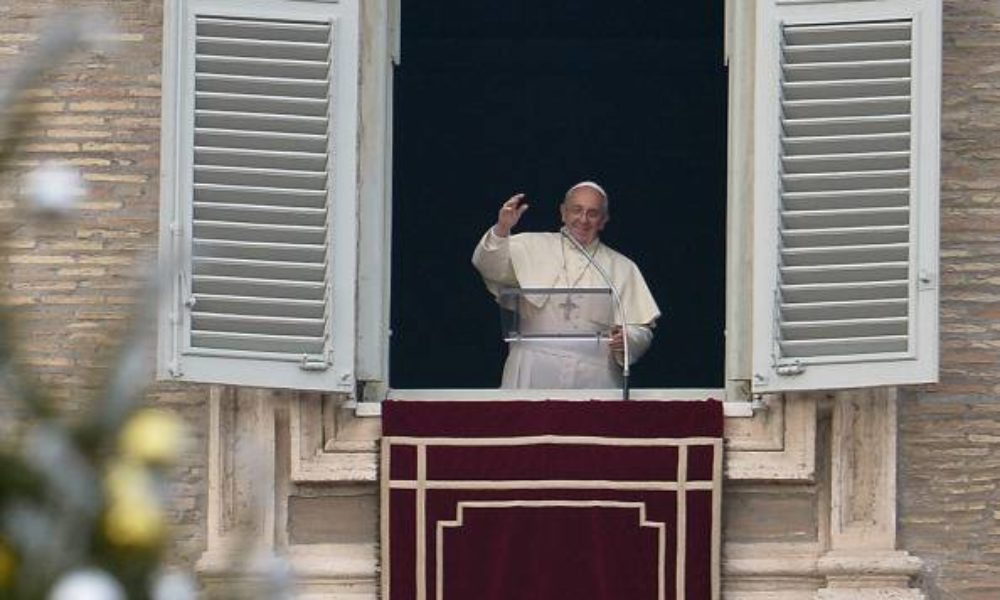Notes on an old « traveling » book: the Gospel of Snagov

Most of the ancient worship books kept in libraries have crossed a long road from the exit of printing, to the current destination.
Such a « traveling book » is the Gospel printed in 1697, which is today in the Library of the Museum of Bucharest. I reconstituted the history of the journey of this copy, researching the notes written on his tabs with Cyrillic or Latin alphabet in the eighteenth-XX centuries.
The Gospel of 1697, the third edition in Romanian, was printed « with the will » of the ruler Constantin Brâncoveanu (1688-1714) and « with the command » of the Metropolitan of the Romanian Country, Theodosie (1668-1672; 1679-1708) in the typography from Snagov Monastery. Diorthositor of the text and typographer was the Hieronymite Antim Ivireanul, at that time egumen of the Snagov Monastery (Ilfov county), which would become a metropolitan of the Romanian Country (1708-1716). Since the appearance, the « Gospel of Antim » has been a very sought after book and its prestige has remained unaltered in time, as confirms it and the notes we present.
Until 1718 we have no news about the route of the Gospel in the library collection. He had undoubtedly traveled from Snagov to Buzău, because here we find it in 1718 owned by the priest Avram. From his nephew, by the name, he bought it on December 20, 1718 Popa Dragomir, the son of Popii Necula in Buzau, with 5 and a half workshops. For sale, several people were present, who signed as witnesses at the end of the note (f. / 3 / r). The reason why Popa Avram sold his gospel shortly before Christmas we find him out of the next day by Popa Dragomir: « And I bought on the Fomete I, Popa Dragomir from Popa Avram and sold it of Fomete and I wrote to know how to know Fomete. And they were our Lord Ion in the chair in Bucharest. Dec (Empo) 21 Le (a) t 7227 ”(f. / 3 / r). The ruler mentioned in the note is Ioan Mavrocordat (1716-1719), and the hunger to which is referred to be strongly manifested in 1717-1719 in the Romanian Country and Moldova during the Austro-Turc war (1716-1718) and the epidemic.
Popa Dragomir left the gospel of his son, Popa Constantin. Between 1765-1770 Popa Constantin borrowed it, then sold it to the priest Mitrea from the village of Bonţeşti from the former county of Râmnicu Sărat (village now in Vrancea county). Popa Mitrea made several notes on the book, including the one from 1770, during the Russian-Turkish war (1768-1774): « To know since the Turks have been robing the Romanian Country and the Moldovan Country, where they could reach. Popa Mitre, May D (e) Ni 5 1770 » (f. 180 V). The son of Mitrea Popii, teacher Toader could not keep the book anymore and sold it in 1793 with seven workshops from Cârstea from the village of Goleşti from the former county of Râmnicu Sărat (village now in Vrancea county). The transaction was made in the church right on the day when he was ordained a priest, the feast of St. Archangel Michael and Gavril (November 8). The salesman was written on the book and several priests, participants in the ceremony together with their priests, signed as witnesses (f. 98 V).
The hunger that hit the Romanian Country in the years 1800-1801 and the priest Cârstea. In February 1802 he was forced to sell the gospel of the priest Miron from the village of Cârceiu (Budești comm.) From the former county of Râmnicu Sărat (currently in Cotești commune, Vrancea county): « To know that this Holy Ivangelii is of the popes of Miron Ot Cârceiu and they bought it from Popa Crâtui. faminein workshops 17 « (f. 160 V). In the middle of the 19th century the book belonged The priest Paul, as he notes himself without giving other details (f. / 1 / v).
At the end of the 19th century, when it was no longer used in the worship, the gospel had reached Costis no other times. He signed on the book on January 5, 1886, showing that he was originally from the village of Târnovo, the Bitolia district of Macedonia (f. / 4 / V). At this time he was in a locality in the surroundings of Focșani, as it results from the list of expenses he notes on one of the tabs. As the gospel entered its property, it is not said in the notes. Unknown are the circumstances in which the book reached Transylvania after 1900. During the interwar period it was in the possession of the priest Vasile Bârluţiu (1893-1968) from Teiuș (Alba county), who donated it on August 4, 1930 to General Teodor Nicolau (1879-1852): » / 4 / r). The General was the commander of the 1st Mountain Division with the garrison in the city of Aiud (Alba county) and a passionate collector of old books.
After leaving the print in 1697, until 1959, when he entered the heritage of the museum through acquisition, this copy passed through the hands of at least 12 people, most priests. He circulated in the northeast of Muntenia, from here he went to Transylvania, then was brought to Bucharest. On its way, the Romanian Gospel of 1697 was read in the church, was sold, bought, borrowed and given and helped families in times of hunger. Even though over time other new editions have been printed, it continued to be desired and valued, at first as a church odor, then as a collection piece.
Illustrations
Fig. 1.
Fig. 2. Notes about the sale of the book in 1718
Fig. 3 notes about the sale of the book in 1793
Article written by Daniela Lupu from the Museum of Bucharest Municipality










